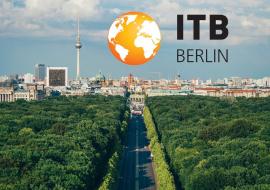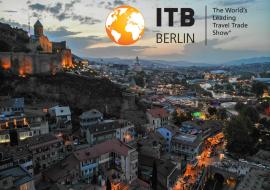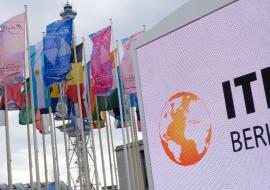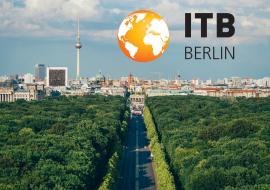ITB: Russia Leads the Rankings for Trips Abroad among BRIC Countries

ITB Berlin and IPK International present an analysis of the dynamic developments and outbound travel volume of the BRIC countries in a five-year comparison – Among the BRIC countries outbound trips have grown at different rates: Russia leads, followed by China, while Brazil and India lag far behind.
They all display dynamic economic growth but in terms of trips abroad the picture is different for each country. When it comes to travelling abroad and their economic situation the so-called BRIC countries display no similarities.
Neither China nor Brazil, the economic powerhouses of the BRIC countries, nor China and India, the most populous in this group, generate the largest volume of trips abroad - instead it is Russia that leads the ranking in this category. According to a special analysis of the World Travel Monitor commissioned by ITB Berlin, there is no correlation between trips abroad, economic prosperity and population density.
Russia is the most sparsely populated of these countries and its economy ranks third, but in terms of outbound travel the Russians come first. They undertake 1.3 times as many trips as the Chinese, 3.4 times as many as Indians, and 4.6 times as many trips as Brazilians.
In terms of growth in outbound trips Russia also ranks first. Five years ago 15.9 million Russians and 13 million Chinese went on trips abroad. According to the latest surveys, 23.8 million Russians and 18.3 million Chinese (not counting trips to Hong Kong and Macau, which remain the most popular destinations) travel abroad. During the period surveyed Russian lust for travel rose by 50 percent, as opposed to a 41 percent increase among Chinese.
As far as outbound travel from India and Brazil is concerned these BRIC countries lag a relatively long way behind. At 7 million trips abroad, India’s total exceeds that of Brazil (5.2 million trips). However, developments in these countries over the last five years show India growing by 30 percent (previously 5.4 million trips abroad in 2006) and Brazil expanding by 85 percent (in 2006 Brazilians undertook only 2.8 million trips abroad).
By comparison, Brazil’s figures may indeed be lower and its economic growth less than India’s, but the Brazilian market is the more dynamic of the two. Looking at China and Russia, despite reporting a high outbound volume for many years, Russia’s growth rate is higher than China’s. Thus no parallels can be drawn between economic developments and the number of trips abroad, as China has the highest economic growth rate.
At close to three billion, despite the population of the BRIC countries being nearly six times larger than that of the EU (around 500 million), these countries’ citizens still travel abroad considerably less. In 2011 they undertook 54 million trips abroad, approximately six times less than EU citizens (345 million). Overall, however, the volume of travel abroad in the BRIC countries continues to grow. Five years ago the citizens of the BRIC countries undertook nine times less trips abroad than Europeans.
Dr. Martin Buck, director of the Competence Center Travel & Logistics, Messe Berlin: “The tourism figures for the BRIC countries, in particular for Russia, are very promising for the tourism industries of the host countries and destinations. They show that the BRIC countries are now catching up, not only economically but as well in terms of outbound trips . This is a process that will no doubt continue.”
ITB Berlin 2013 will be taking place from Wednesday, 6 to Sunday, 10 March, and from Wednesday to Friday will be open to trade visitors only. Parallel with the trade show, the ITB Berlin Convention, the largest travel industry event of its kind in the world, will be held from Wednesday, 6 to Friday, 8 March 2013.
The World Travel Monitor from IPK International is the world’s largest tourism survey and the only one examining the volume of outbound travel and travel behavior (destination choice, purpose of trip, holiday types, types of business travel, duration of trip, transportation mode, accommodation type/category, travel season, information and booking behavior, expenditure, regional markets, target group profiles etc.) in 60 countries of origin in Europe, the Arab countries, the Americas and Asia.














